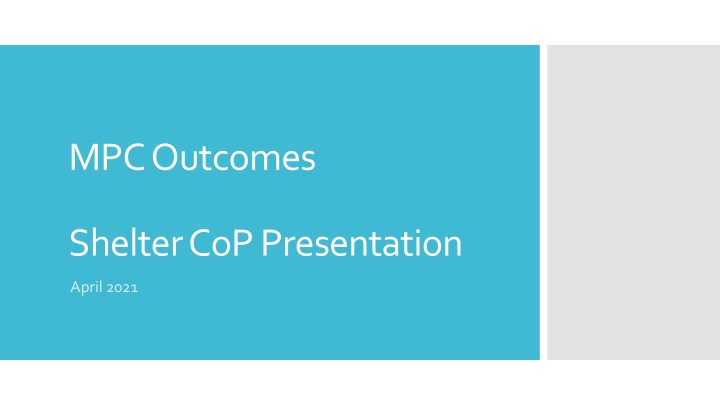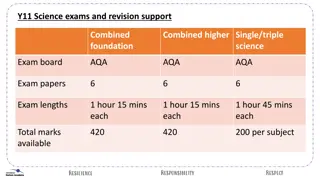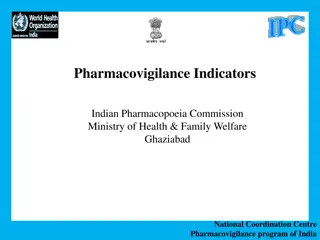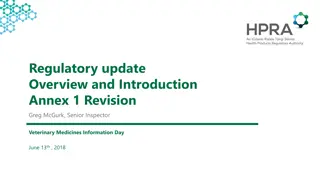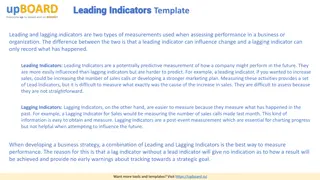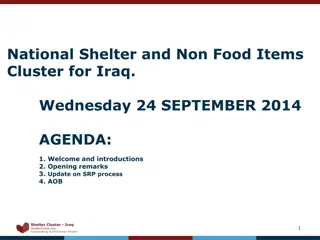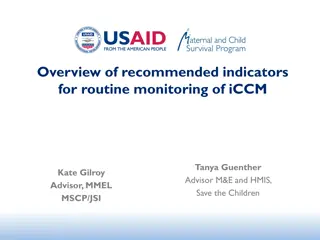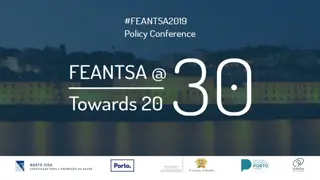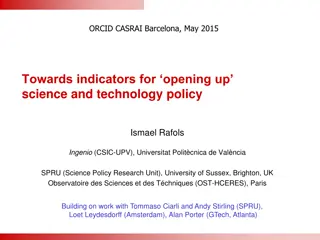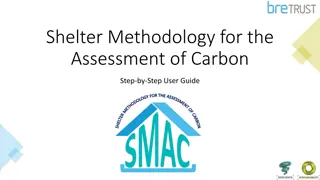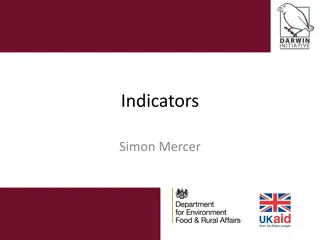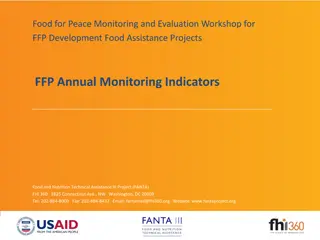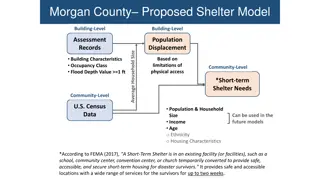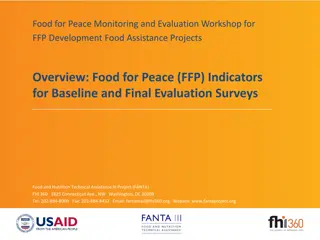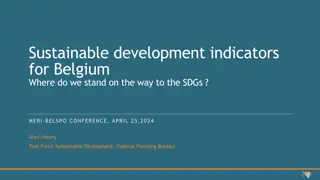Shelter Indicators Revision Process
Collection and analysis of data to inform revisions of shelter indicators for MPC outcomes. Review of current indicators and feedback on measuring outcomes beyond technical standards. Exploration of minimum number of indicators applicable universally.
Download Presentation

Please find below an Image/Link to download the presentation.
The content on the website is provided AS IS for your information and personal use only. It may not be sold, licensed, or shared on other websites without obtaining consent from the author.If you encounter any issues during the download, it is possible that the publisher has removed the file from their server.
You are allowed to download the files provided on this website for personal or commercial use, subject to the condition that they are used lawfully. All files are the property of their respective owners.
The content on the website is provided AS IS for your information and personal use only. It may not be sold, licensed, or shared on other websites without obtaining consent from the author.
E N D
Presentation Transcript
MPC Outcomes Shelter CoP Presentation April 2021
Data collection to inform the revision of the indicators has been completed, with close to 60 KIIs and over 30 survey respondents A report of the findings is being drafted, with plans to have a version that can be circulated more widely The reference group that is steering the process will be meeting on May 10thto discuss findings and plan for next steps for revisions. The reference group will provide final decisions on content. PROCESS & TIMELINE As this falls under the current Grand Bargain, the aim is to complete the revisions and drafting of new indicators and guidance by June 2021 (GB Cash Workstream likely to have a concluding meeting in June TBC). As such we re aiming ideally to have inputs from sectors by end of May. This might be an iterative process including review and feedback from the reference group and co-leads
Current indicatorsin MPC outcome indicators draftfor testing SHELTER % SETTLEMENTS /HOUSEHOLD NFI S % of households whose shelter solutions meet agreed technical and performance standards % of target population living in safe and dignified shelters % of households reporting adequate access to household non- food items*
MPC alone will not get you these outcomes. Shouldn't be measuring whether people have access to NFIs, but rather monitoring whether people can cook, eat, sleep - domestic functions that shelter enables. That is the condition that we should be trying to measure rather than the technicalities of whether walls are of a certain standard. Used this and found that there was no change in quality of housing and thought this was good as people shouldn't move based on a few months of MPC. We need to be realistic about the changes that MPC can bring about. But avoiding eviction would be a good indicator. There were changes in meeting rental payments (indicator is not included but should be). Feedback on Shelter Indicators from KIIs Indicator comes from SPHERE but is not really relevant. Doubt anyone is actually using it. Should have % of cash expenditure on rent. Not so established in the shelter sector, they don't understand why it would be useful to understand expenditure on rent. More specific to refugee camps? Not the case here, where people find somewhere to rent and cover their own utility bills. Huge refugee population that are not able to do this and are evicted. These indicators come from a 'camp' perspective, not an accommodation perspective. For example, for the Venezuela response, we had to adapt the indicators.
1) MINIMUM NUMBER OF INDICATORS (2 or 3 maximum) that might apply in most contexts, WITHOUT SIGNIFICANT CONDITIONS ON USE. o This is like the original draft version although obviously the indicators themselves can be changed. This approach could be used if the cluster and other stakeholders can identify and agree upon appropriate indicators which have a relatively universal application. This means the indicators in the document are recommended for MPC interventions where the given sector is part of the identified and targeted needs (e.g., included in the MEB). Indicators might be required or optional, so implementers can select based on the programme, context, etc. This does not preclude other relevant sectoral indicators being used for a given programme and context, or for agencies to choose not to use the recommended indicators if they determine they are not relevant or applicable for the intervention. Ideally it should be possible for non-specialists to collect and analyse these indicators, albeit that with requisite guidance and tools, as necessary. OPTIONS (based on propositions from different sectors so far) o o o
2) MINIMUM NUMBER OF INDICATORS (2 or 3 maximum) WITH SIGNIFICANT CONDITIONS ON USE. o In this case the sector includes recommended indicators, but with conditions on when these should be considered for use. o This does not preclude other relevant sectoral indicators being used for a given programme and context, or for agencies to choose not to use the recommended indicators if they determine they are not relevant or applicable for the intervention. o Ideally it should be possible for non-specialists to collect and analyse these indicators, albeit that with requisite guidance and tools, as necessary. If this is not the case i.e., that technical sector specialists would need to be involved then this would have to be included as a condition. OPTIONS (based on propositions from different sectors so far)
3) NO RECOMMENDED INDICATORS o This would apply where it is not possible to identify and agree upon a minimum number of core indicators that can be recommended, either with or without conditions. o Sectors may choose to include some notes of explanation here, or guidance on how to approach monitoring MPC outcomes in lieu of specific recommended indicators.. Note there that we would want to avoid including long lists of potential indicators, although it might be option to link to other resources. OPTIONS (based on propositions from different sectors so far) o There is also the possibility to link sectoral analysis to the responses to the qualitative questions and expenditure data (if either or both are collected). This can enable better understanding of the use of MPC in relation to a given sector, and associated gaps and needs. This approach can of course also apply where minimum recommended sectoral indicators have been included as well.
